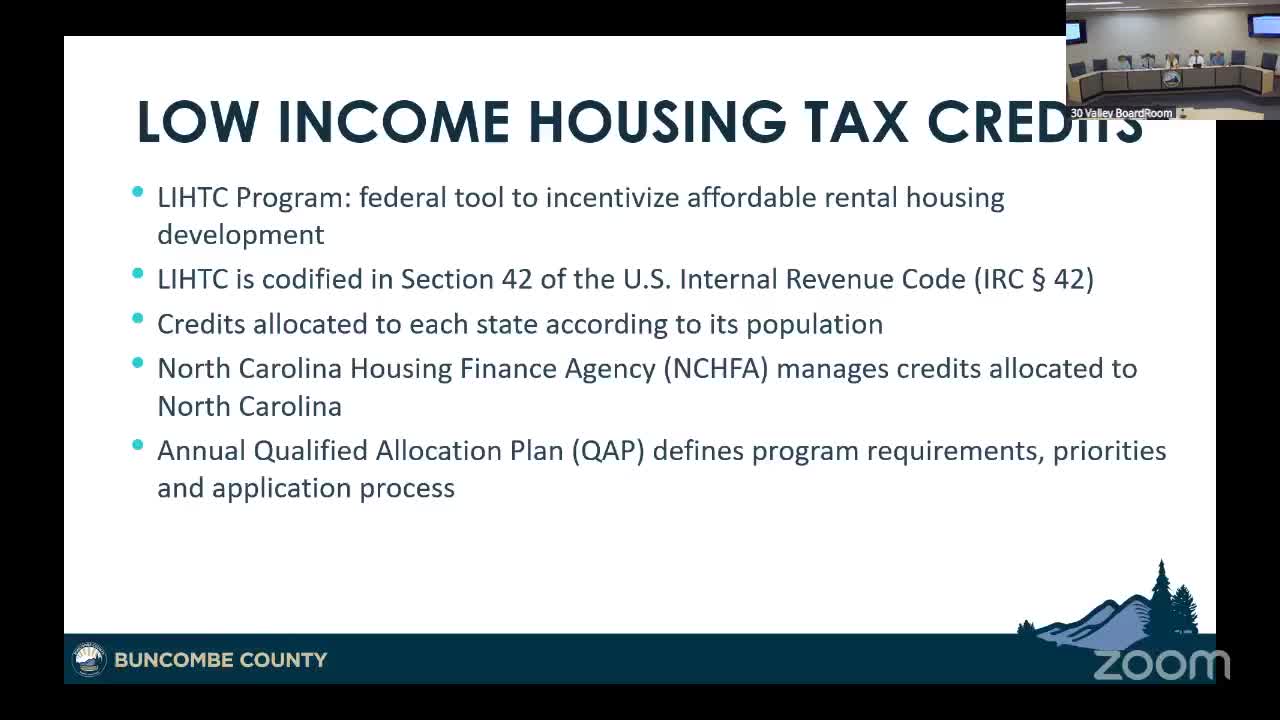North Carolina Housing Finance Agency Awards $1.3M Tax Credit to Pillows at Swannanoa
September 29, 2025 | Buncombe County, North Carolina
This article was created by AI summarizing key points discussed. AI makes mistakes, so for full details and context, please refer to the video of the full meeting. Please report any errors so we can fix them. Report an error »

The Buncombe County Affordable Housing Subcommittee meeting on September 2, 2025, spotlighted the crucial role of the Low Income Housing Tax Credit (LIHTC) program in boosting affordable housing across North Carolina. Established in 1986, this federal initiative has emerged as the leading source of affordable housing units in the country, with the North Carolina Housing Finance Agency (NCHFA) overseeing its implementation at the state level.
During the meeting, officials discussed how the LIHTC program allocates credits to states based on population, using a per capita multiplier. The NCHFA manages these credits and develops the Qualified Allocation Plan (QAP), which outlines program requirements and priorities. The county typically provides feedback on the QAP annually, ensuring local needs are considered.
A key point of discussion was the financial mechanics of the LIHTC program. The tax credits, which are utilized over a decade, attract investors by offering dollar-for-dollar tax benefits. This equity financing is essential for making affordable housing projects financially viable, allowing developers to charge lower rents and increase the supply of rental units.
The meeting also highlighted the competitive nature of the 9% tax credit applications, which provide the highest subsidy—up to 70%. In contrast, the 4% tax credits, while less competitive and offering a 30% subsidy, require additional funding sources from local governments or banks to bridge the financial gap.
As the meeting concluded, the subcommittee emphasized the importance of ongoing compliance and monitoring of LIHTC projects to ensure they meet rent restrictions and maintain affordability. This commitment to oversight is vital for sustaining the program's success and addressing the pressing need for affordable housing in Buncombe County.
During the meeting, officials discussed how the LIHTC program allocates credits to states based on population, using a per capita multiplier. The NCHFA manages these credits and develops the Qualified Allocation Plan (QAP), which outlines program requirements and priorities. The county typically provides feedback on the QAP annually, ensuring local needs are considered.
A key point of discussion was the financial mechanics of the LIHTC program. The tax credits, which are utilized over a decade, attract investors by offering dollar-for-dollar tax benefits. This equity financing is essential for making affordable housing projects financially viable, allowing developers to charge lower rents and increase the supply of rental units.
The meeting also highlighted the competitive nature of the 9% tax credit applications, which provide the highest subsidy—up to 70%. In contrast, the 4% tax credits, while less competitive and offering a 30% subsidy, require additional funding sources from local governments or banks to bridge the financial gap.
As the meeting concluded, the subcommittee emphasized the importance of ongoing compliance and monitoring of LIHTC projects to ensure they meet rent restrictions and maintain affordability. This commitment to oversight is vital for sustaining the program's success and addressing the pressing need for affordable housing in Buncombe County.
View full meeting
This article is based on a recent meeting—watch the full video and explore the complete transcript for deeper insights into the discussion.
View full meeting
